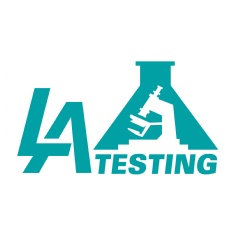DTSC Offers California Residents and Real Estate Investors Vapor Intrusion Guidance
LA Testing provides vapor intrusion testing services to identify a wide range of potentially hazardous chemicals in buildings of all types.
Back in 2011, the California Department of Toxic Substances Control (DTSC) published Guidance for the Evaluation and Mitigation of Subsurface Vapor Intrusion to Indoor Air (Vapor Intrusion Guidance). The document recommends an approach for evaluating vapor intrusion into buildings and its subsequent impact on indoor air quality (IAQ).
Vapor intrusion describes the process by which chemical vapors from contaminated soil or groundwater seep into a building. Many of these chemicals can cause short or long-term health concerns for building occupants. Unfortunately, there are numerous locations in California and across the rest of the United States that have contaminated soil or groundwater due to manmade pollution. Some of these sites have been a problem for decades and as communities have expanded, a growing number of residential and commercial developments have been built above or near these areas.
The DTSC guidance recommends the approach listed below for the evaluation of vapor intrusion. For sites with existing buildings, Steps 1 through 11 apply. For sites with proposed buildings, Steps 1 through 3, 5, 6, 7 and 11 apply.
Step 1 : Identify all spills and releases.
Step 2 : Characterize the site, including subsurface features such as utility corridors.
Step 3 : Identify the site as one where vapor intrusion may represent a complete exposure pathway (volatile chemicals are detected in the subsurface).
Step 4 : For an existing building, determine if an imminent hazard exists from vapors migrating into indoor air. If an imminent hazard is identified, proceed to Step 11a.
Step 5 : Perform a screening evaluation using the provided default vapor attenuation factors. If a potential risk exists, proceed to either Step 6 or Step 8, as appropriate.
Step 6 : Collect additional site data.
Step 7 : Perform an evaluation using site-specific physical parameters and building parameters as appropriate. If the calculated risk is still significant, proceed to the next applicable step.
Step 8 : For an existing building, prepare an indoor air sampling work plan, develop a contingency plan for appropriate response actions, and conduct appropriate public outreach with the affected community.
Step 9 : For an existing building, conduct indoor air sampling.
Step 10 : For an existing building, evaluate the data to determine if the indoor air concentrations are acceptable. If they are not, proceed to Step 11.
Step 11a : For an existing building, mitigate indoor air exposure, implement engineering controls, and remediate the volatile chemical contamination as appropriate.
Step 11b : If no building exists on the site, remediate subsurface volatile chemical contamination or implement institutional controls to ensure that potential exposure is reduced or prevented.
Step 11c : For both circumstances, institute long-term monitoring at the site.
“Vapor intrusion can be a serious concern and for real estate investors and California residents concerned about potential contamination issues in homes, schools or work environments. LA Testing offers comprehensive testing services and all of the sampling supplies needed to identify a wide range of chemical pollutants,” said Michael Chapman, Laboratory Manager at LA Testing’s Huntington Beach facility. “If tests results indicate an issue, corrective actions can then be implemented to help eliminate or mitigate the situation to prevent exposure concerns for building occupants.”
LA Testing has also sponsored an online educational video about some of the dangers associated with vapor intrusion that can be seen at: https://youtu.be/laGyL4byxLo.
To learn more about testing for vapor intrusion or other indoor air quality and environmental issues, please visit www.LATesting.com, email info@LATesting.com or call (800) 755-1794.
About LA Testing
LA Testing is California’s leading laboratory for indoor air quality testing of asbestos, mold, lead, VOCs, formaldehyde, soot, char, ash and smoke damage, particulates and other chemicals. In addition, LA Testing offers a full range of air sampling and investigative equipment to professionals and the general public. LA Testing maintains an extensive list of accreditations including: AIHA LAP LLC., AIHA ELLAP, AIHA EMLAP and AIHA IHLAP, CDC Elite, NVLAP, State of California, State of Hawaii Department of Health and other states. LA Testing, along with the EMSL Analytical, Inc. network, has multiple laboratories throughout California including South Pasadena, Huntington Beach, San Leandro and San Diego.
( Press Release Image: https://photos.webwire.com/prmedia/9645/224735/224735-1.jpg )
WebWireID224735
- Contact Information
- Joseph Frasca
- Senior Vice President of Marketing
- LA Testing
- (1) 856-303-2503
- Contact via E-mail
This news content may be integrated into any legitimate news gathering and publishing effort. Linking is permitted.
News Release Distribution and Press Release Distribution Services Provided by WebWire.

